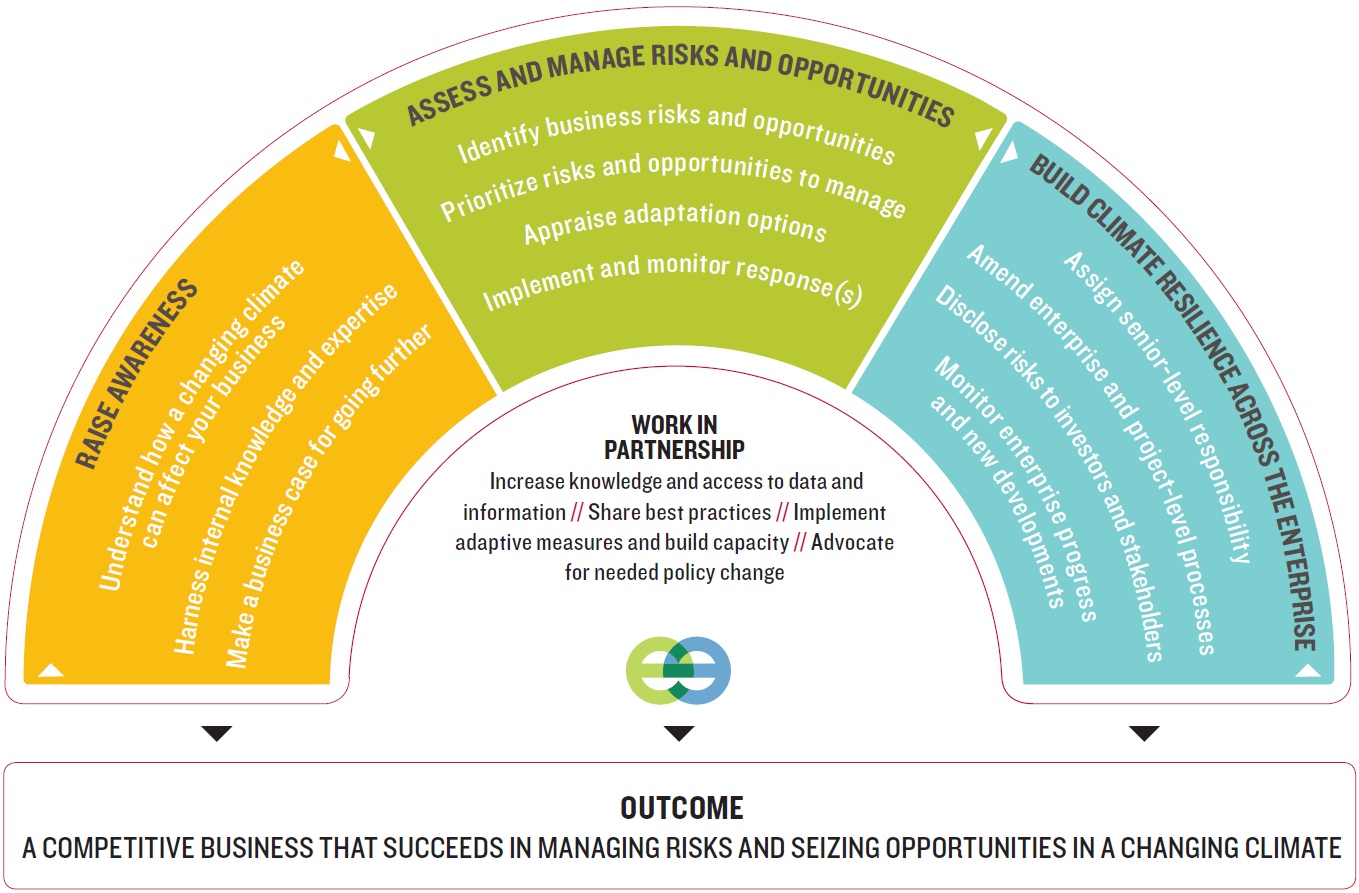Business Primer – Chapter 7: Key Messages and Recommendations
A changing climate presents operational, strategic, and financial risks and opportunities for Canadian businesses. These range from increased insurance costs because of growing flood risks to reputational losses from customer delays resulting from extreme weather events, and from limits to business expansion opportunities due to limited water availability to new market opportunities for providers of adaptation solutions.
Pacesetting businesses demonstrate that firms can adjust the way they do business to better manage climate change risks and opportunities. These adjustments can preserve and create value. However, many businesses have yet to follow their lead.
Climate change is here to stay. Businesses of all sizes, sectors, and in all regions will continue to be affected. Proactive planning for climate change can limit downside risks and take advantage of commercial opportunities. Businesses that follow the process set out in this report will be well positioned to adapt and prosper in a changing climate (Figure 1).
 |
The NRT recommends that businesses prioritize the following strategies to move forward with adaptation, particularly when resources are limited:
DON’T LET PERFECTION
BE THE ENEMY OF THE GOOD
Businesses demonstrate a clear understanding of the importance of GHG emissions mitigation and are adept at reporting their efforts to achieve emissions reductions and energy efficiencies. Progress on climate change adaptation, however, is less advanced. The first step in adapting to a changing climate is appraising the impacts of climate change on your business objectives.
SPOT
OPPORTUNITIES
Stay alert to opportunities to reduce costs of potential climate change impacts through adaptation, to expand existing business lines, and to create new ones by providing adaptation solutions to customers. For some industry sectors, an opportunities framing goes a long way to inspire action that advances adaptation within the business.
KNOW YOUR EXPOSURE
AND RESPONSES
Decision makers, from operational managers to directors, should be able to answer the following questions: What risks and opportunities does a changing climate create for your business? What actions are currently in place to manage these risk and opportunities? What further actions are you planning for the future?
INVOLVE SUPPLIERS
AND CUSTOMERS
Engage suppliers and customers across the supply chain in adaptation discussions. Draw on these upstream and downstream perspectives to clarify risk tolerances across the board, better assess your own vulnerability, and encourage action among the actors on which your business depends.
WORK
WITH OTHERS
Share expertise and limit resource demands by collaborating with experts and other businesses in your sector or region. Use your common interests to identify risks and opportunities and assess potential adaptive responses.
BROADEN YOUR LENS BEYOND
MANAGING TODAY’S WEATHER RISKS
Businesses should be prepared for today’s severe weather but also consider the impacts on business from future climate change, including gradual shifts in baseline climate, the changing frequency and intensity of extreme weather events, and cascading societal and economic risks.
























